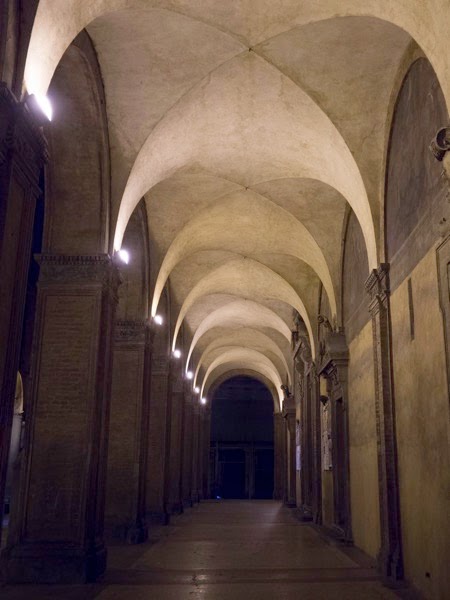Thomas Pynchon’s Bleeding Edge
Imagine future scholars attempting to reconstruct the history of the human race based only on the works of American writer T. Pynchon. OK, so we can travel in time, but only if we have enough electricity. And there really is spooky action at a distance, and it really is spooky. There are countless conspiracies, of course, otherwise nothing would ever get done, right? Moreover, in case you are wondering, the Earth is hollow, and if you live near Durham, England, you had better watch out for that big worm recently spotted in the neighbourhood. So I was very interested to read what Pynchon would have to say about the 11th of September, 2001, which is one of the subjects of his new book, Bleeding Edge.
Thomas Pynchon and the Lambton Worm
To go back: when I was at University in Manchester there was a tiny second-hand bookshop that I liked to go to. The owner was a friendly fellow, and I am sure I discovered Pynchon’s work browsing his shelves. After a while I asked him to look out for a copy of Gravity’s Rainbow, Pynchon’s most famous book, and indeed it eventually showed up. I was lucky enough to get the big first-edition UK paperback, with nice paper and pages sewn together. In the inside back cover there were handwritten addresses of two people in Quebec with the words “good luck” written in big block letters at the bottom. I never did write to them, but I did finish the book, so maybe it helped. A decade or so later, while I was living in Durham, Mason and Dixon came out and my friend Stephen B. and I were very excited— not only was the reclusive Mr. Pynchon still writing, but he was writing books about places we lived in, because Jeremiah Dixon was actually from Bishop Auckland, only a short distance from Durham. Perhaps, Stephen wondered, Pynchon had actually been to Durham to research his book? Maybe we had walked next to him in Durham’s narrow streets, but not actually recognised him because, well, nobody actually knows what Pynchon looks like. Reading the book in my little room at Hallgarth street I was astonished by the hyper-realistic obscure details he included, and how much it felt to me like Durham and the north-east of England. That kind of weird foggy unreal feeling provoked by a combination of not enough light and the presence of very large and very old buildings extremely nearby.
When I first read Pynchon he was writing about things that I had no personal experience of, except indirectly (I have never seen the Lambton Worm but I knew where it lives). But Bleeding Edge concerns events which occurred in my lifetime: the days and weeks before and after the 11th of September 2001. Of course if you are expecting drama and catastrophe that is not what is in the book: Pynchon’s characters experience the day’s terrible events from a distance, they see it for the most part on TV like the rest of us, downtown and uptown are are not so close after all. No, the drama of the thing is not what interests Pynchon, what interests him is of course the hidden connections, the conspiracies.
Bleeding edges and shaggy dog stories
The principal character in his book is a semi-retired fraud investigator who gets called in to investigate the accounts of a Silicon Alley start-up which are showing more than one or two in logical inconsistencies. The trail of numbers leads to … what exactly? It’s never completely clear. Perhaps that money is being directed into financing some flying lessons for budding middle-eastern pilots who only want to take off and fly but never to land? Or buy some surface-to-air missiles? The most fascinating aspect of the book is Pynchon’s depiction of turn-of-the-last-century computer culture. Mostly in New York, so yes, big switch for Pynchon who has set most of his previous books in California. Here, he is fascinated by the “deep web”, that layer of the internet which is invisible either to search engines or to anyone with a “normal” web browser. This “deep web” functions as a kind of quantum-mechanical set of hidden variables which explain how everything links up with everything else, long-standing Pynchonian concerns. What’s also kind of weird and fascinating about it is how he makes the past sound like the future, because after all a decade-and-a-half is a very long time in information technology. In the meantime there have been quite a few exponential doublings in transistor densities.
Like his previous book Inherent Vice it is all a bit of a shaggy dog story, and, even better this time there is a real shaggy and dog story — a story about Shaggy and Scooby Doo, which ends in a terrible pun. The book is full of gags and songs, a lot of them demanding a quite profound knowledge of the subculture he’s parodying, and at the same time there is a non-negligible undercurrent of paranoia and fear. Period artefacts (computers and programming culture) are rendered accurately and in detail.
What’s new?
So, long-time Pynchon fans might ask, what’s new here? Well, not fundamentally a whole lot. What is wonderful about the book is its crazy picture of America at the start of the 21st century. Pynchon leans lightly on his subject material but there no doubt how serious the undercurrents are. Small invisible perturbations provoke world-changing events, and, what’s worse, often without any causal relationship. Subcultures hiding from the mainstream world will be suppressed by “state actors”, unless they can completely vanish. And a lot of takeaway food will be consumed.
At the end of the book, there is no resolution of all matters brought up in the previous pages, because, hey, this the real world, right?


